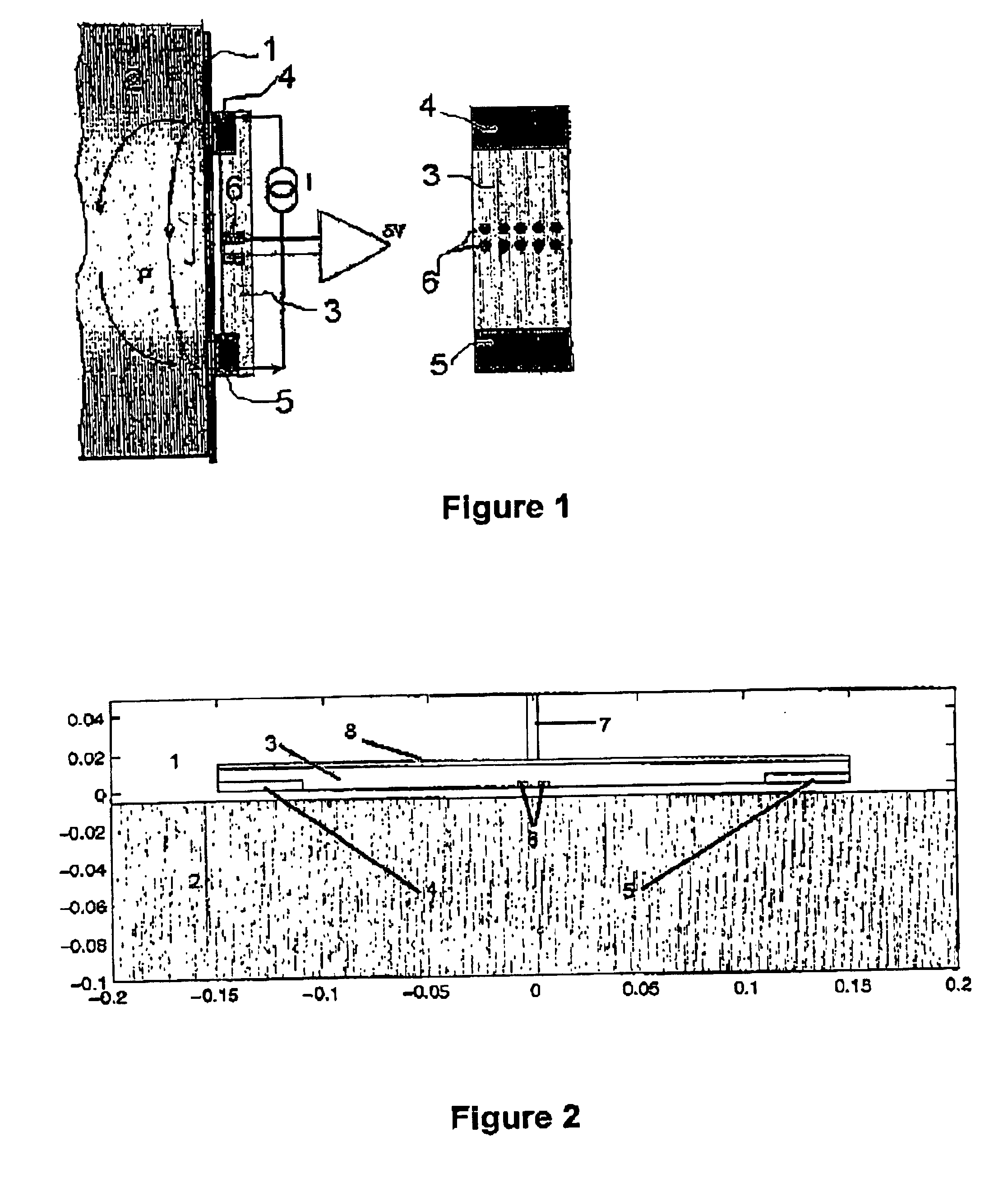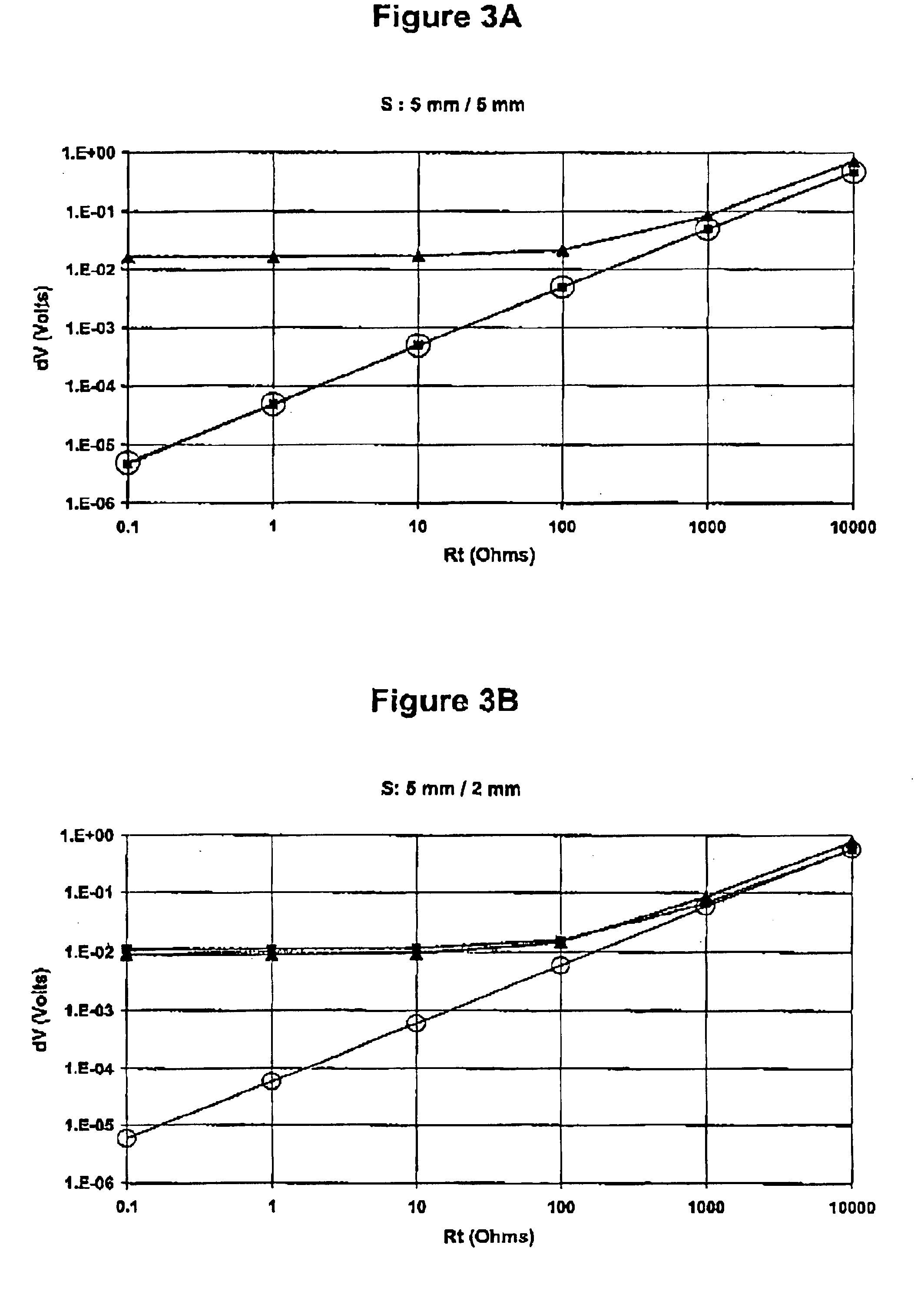Conductive pad around electrodes for investigating the wall of a borehole in a geological formation
a geological formation and electrode technology, applied in the field of electric exploration of boreholes, can solve the problems of high cost of core taking, poor image quality, noise generation from dc, etc., and achieve the effect of reducing the total length of the pad
- Summary
- Abstract
- Description
- Claims
- Application Information
AI Technical Summary
Benefits of technology
Problems solved by technology
Method used
Image
Examples
Embodiment Construction
[0023]FIG. 1 is a diagram showing the principle on which electrical measurement is based in the imaging technique described in international patent application PCT / US99 / 14420. That tool is particularly adapted to investigating the wall 2 of a borehole drilled with a non-conductive drilling mud, for example a drilling fluid whose liquid phase is constituted essentially by an oil (diesel oil, synthetic oil) or by a water-in-oil emulsion. The term “oil-base mud” is used below to designate drilling fluids of either of those types. The drilling mud forms a mud cake 1 along the wall 2.
[0024]The tool for investigating the wall of a borehole has a pad 3 made of an electrically insulative material such as a ceramic or polymers having high strength and high thermal and chemical stability, in particular of the polyarylene ether cetone type (polyether ether cetone or PEEK).
[0025]The pad serves as a support for two current injectors: the source electrode 4 and the return electrode 5. These two e...
PUM
 Login to View More
Login to View More Abstract
Description
Claims
Application Information
 Login to View More
Login to View More - R&D
- Intellectual Property
- Life Sciences
- Materials
- Tech Scout
- Unparalleled Data Quality
- Higher Quality Content
- 60% Fewer Hallucinations
Browse by: Latest US Patents, China's latest patents, Technical Efficacy Thesaurus, Application Domain, Technology Topic, Popular Technical Reports.
© 2025 PatSnap. All rights reserved.Legal|Privacy policy|Modern Slavery Act Transparency Statement|Sitemap|About US| Contact US: help@patsnap.com



